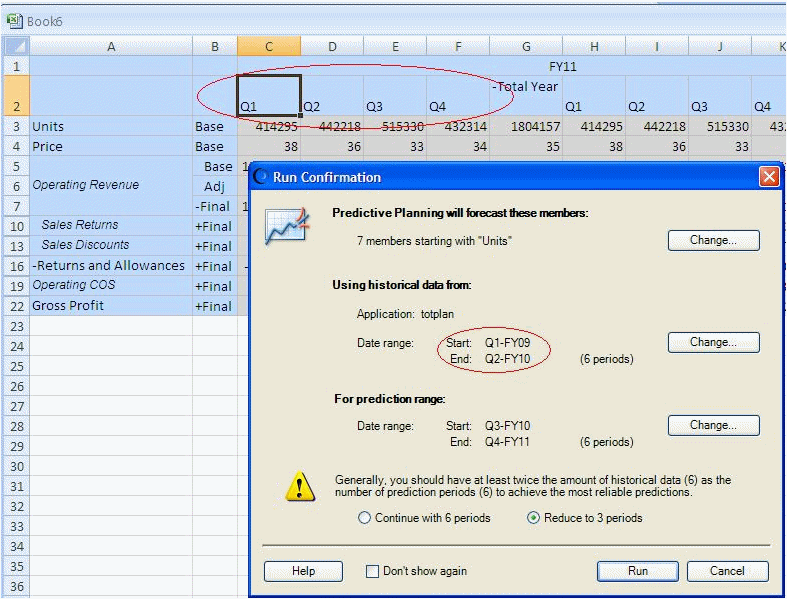Determining the Time Granularity of Predictions
The lowest Period dimension member level on a form determines the time granularity of the prediction. That is, if the lowest member level is Quarters (Qtr1, Qtr2, on so on), then historical data is retrieved at the Quarters level and the prediction will also take place at the Quarters level. For this reason, it is important to include on the form the lowest level of Period members possible so that the greatest amount of historical data can be used.
In Figure A-1, Quarters are the lowest level members of the Period dimension that appear on the form. You can tell this by the fact that the "Q1" name does not have a "+" symbol by it. If it did, this would mean that lower level members (such as months) exist on the form but are hidden from view by collapsing the columns. If the form included the Months levels (even if hidden), then Predictive Planning would predict at the Months level. For purposes of determining time granularity, it does not matter if the members are hidden or visible on the form.
Figure A-1 Time-granularity Example
